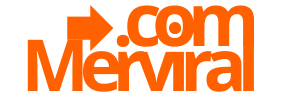How to Track Your Spending: Budgeting for Beginners
Budgeting, at its core, is about understanding where your money goes. Tracking your spending is the cornerstone of any successful budget. Without knowing your current spending habits, creating a realistic and effective financial plan is nearly impossible. This comprehensive guide provides beginners with the essential knowledge and practical techniques to track their expenses effectively, laying the foundation for a healthier financial future.
1. Understanding the Importance of Tracking Expenses
Before diving into the “how,” let’s emphasize the “why.” Tracking your spending offers several significant benefits:
- Financial Awareness: It provides a clear picture of your income versus expenses. Many people are surprised to discover where their money actually goes, often underestimating spending on categories like dining out or entertainment.
- Identifying Spending Leaks: Small, seemingly insignificant expenses can add up quickly. Tracking helps pinpoint these “spending leaks” that drain your budget without providing much value. A daily coffee, a streaming service subscription you rarely use, or impulse purchases can cumulatively make a significant impact.
- Budget Optimization: Knowing where your money goes allows you to make informed decisions about where to cut back or reallocate funds. You can identify areas where you’re overspending and redirect those funds towards savings goals or debt repayment.
- Goal Achievement: Linking your spending habits to your financial goals (e.g., buying a house, paying off debt, early retirement) makes the budgeting process more meaningful and motivating. Tracking provides concrete feedback on whether you’re on track to achieve your goals.
- Predicting Future Expenses: Analyzing past spending patterns can help you anticipate future expenses, such as annual car insurance premiums, holiday gifts, or home repairs. This allows you to proactively save for these expenses, preventing financial surprises.
- Reducing Financial Stress: Gaining control over your finances can significantly reduce stress and anxiety related to money. Having a clear understanding of your financial situation empowers you to make informed decisions and avoid financial pitfalls.
2. Methods for Tracking Your Spending
Several methods can be used to track your spending, each with its own advantages and disadvantages. Choose the method that best suits your lifestyle and preferences:
-
Manual Tracking with a Notebook or Spreadsheet:
- Description: This involves recording every expense in a physical notebook or a digital spreadsheet (e.g., Google Sheets, Microsoft Excel).
- Pros: Low-cost (or free), simple to set up, customizable to your specific needs, provides a high level of awareness.
- Cons: Time-consuming, requires discipline and consistency, prone to human error.
- Tips: Use clear categories (e.g., housing, transportation, food, entertainment), track expenses daily or weekly, reconcile with bank statements regularly. Consider using formulas in a spreadsheet to automatically calculate totals and track spending trends.
-
Budgeting Apps:
- Description: Mobile and web applications designed specifically for budgeting and expense tracking. Many offer features like automatic transaction importing, categorization, goal setting, and reporting.
- Examples: Mint, YNAB (You Need a Budget), Personal Capital, PocketGuard.
- Pros: Convenient, automatic transaction importing, visual reports, goal tracking, can be customized.
- Cons: Subscription fees for premium features (some), potential privacy concerns (ensure the app uses strong security measures), may require linking bank accounts.
- Tips: Choose an app that aligns with your budgeting style (e.g., envelope budgeting, zero-based budgeting), take advantage of free trials to test different apps before committing to a subscription, review reports regularly to identify spending patterns.
-
Bank Statements and Credit Card Statements:
- Description: Reviewing your monthly bank and credit card statements to identify all expenses.
- Pros: Comprehensive record of all transactions, readily available, can be used to identify fraudulent activity.
- Cons: Time-consuming to categorize transactions manually, does not provide real-time spending information, lacks budgeting features.
- Tips: Download statements in a CSV format for easier analysis in a spreadsheet, create a system for categorizing transactions (e.g., using different colors or labels), look for recurring subscriptions or charges you no longer need.
-
Envelope System (Cash-Based Budgeting):
- Description: Allocating cash to different envelopes for specific spending categories (e.g., groceries, entertainment, dining out). Once the money in an envelope is gone, you cannot spend more in that category until the next budgeting period.
- Pros: Forces you to stick to your budget, promotes mindful spending, eliminates the risk of overspending on credit cards.
- Cons: Requires careful planning and execution, may be inconvenient for online purchases, can be difficult to track expenses accurately if you don’t record every transaction.
- Tips: Choose spending categories that are easy to manage, track your envelope balances regularly, consider using a digital envelope system with a budgeting app if you prefer not to carry large amounts of cash.
3. Setting Up Your Tracking System
Regardless of the method you choose, these steps will help you set up an effective tracking system:
-
Define Spending Categories:
- Create a comprehensive list of spending categories that accurately reflect your lifestyle. Common categories include:
- Housing (rent/mortgage, utilities, property taxes, insurance)
- Transportation (car payment, gas, insurance, maintenance, public transportation)
- Food (groceries, dining out, coffee)
- Utilities (electricity, gas, water, internet, phone)
- Entertainment (movies, concerts, streaming services, hobbies)
- Personal Care (haircuts, clothing, toiletries)
- Health (insurance premiums, doctor visits, medications)
- Debt Payments (credit cards, loans)
- Savings (emergency fund, retirement, investments)
- Gifts (birthdays, holidays)
- Miscellaneous (subscriptions, memberships, pet care)
- Be specific and avoid overly broad categories. For example, instead of “Food,” break it down into “Groceries” and “Dining Out.”
- Create a comprehensive list of spending categories that accurately reflect your lifestyle. Common categories include:
-
Choose a Tracking Tool:
- Select the method that best aligns with your preferences and technical skills. Consider factors such as convenience, cost, and level of detail required.
-
Start Tracking Immediately:
- Don’t wait for the perfect moment to start tracking your spending. Begin immediately and be diligent about recording every transaction, no matter how small.
-
Set Realistic Goals:
- Establish achievable savings goals that align with your financial priorities. This will provide motivation and help you stay on track.
4. Maintaining and Analyzing Your Spending Data
Tracking is only half the battle. The real value comes from analyzing your spending data and making adjustments to your budget:
-
Regularly Review Your Data:
- Set aside time each week or month to review your spending data. This will help you identify trends, patterns, and areas where you can cut back.
-
Identify Spending Leaks:
- Look for small, recurring expenses that add up over time. Consider whether these expenses are providing enough value and identify opportunities to reduce or eliminate them.
-
Compare Spending to Your Budget:
- If you’ve already created a budget, compare your actual spending to your planned spending. Identify any significant variances and investigate the reasons behind them.
-
Adjust Your Budget as Needed:
- Your budget should be a living document that adapts to your changing circumstances. Make adjustments as needed based on your spending data and financial goals.
-
Celebrate Your Successes:
- Acknowledge and celebrate your progress towards your financial goals. This will help you stay motivated and maintain your commitment to budgeting.
5. Advanced Tracking Techniques
Once you’ve mastered the basics of tracking your spending, you can explore more advanced techniques:
-
Track Non-Cash Spending:
- Don’t forget to track non-cash expenses such as rewards points, gift cards, and employer benefits.
-
Automate Tracking:
- Use budgeting apps or bank feeds to automatically import transactions and categorize expenses.
-
Analyze Spending Trends Over Time:
- Use charts and graphs to visualize your spending trends over time. This can help you identify seasonal spending patterns and make long-term financial plans.
-
Set Up Alerts and Notifications:
- Configure alerts to notify you when you exceed your budget in a particular category or when you have an upcoming bill payment.
By diligently tracking your spending and analyzing your financial data, you’ll gain valuable insights into your money habits, enabling you to make informed decisions and achieve your financial goals. Mastering expense tracking is the first and most crucial step towards financial freedom.

